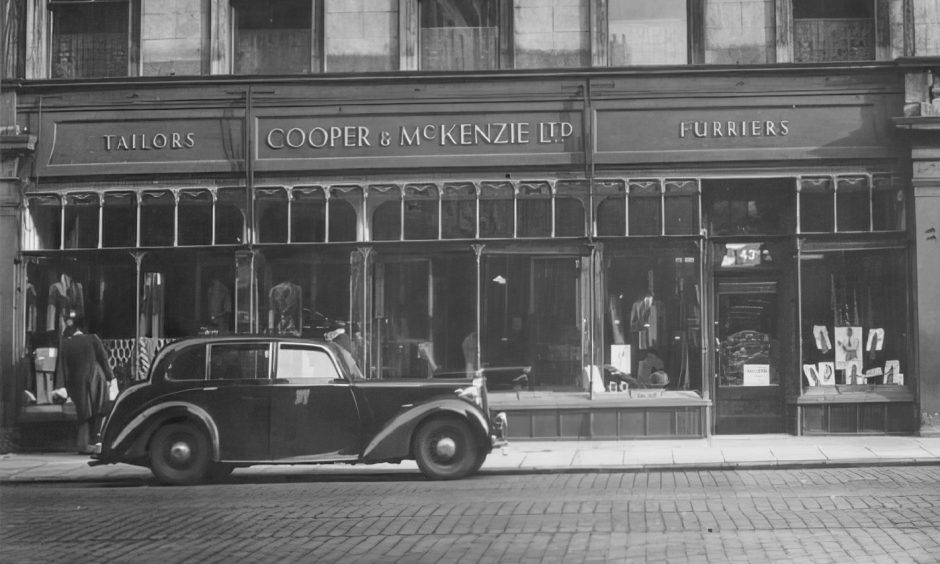
Cooper and McKenzie welcomed generations through its doors on the street once dubbed Dundee’s Savile Row.
The “old-style” tailor shop in Reform Street was the place for immersing yourself in the world of dapper threads.
The stylish street was the first to be laid out as a result of the local 1825 Improvement Act and changed the nature of the town.
Two shoemakers, one hatter, five clothiers and two silk merchants were among the merchants to move to Reform Street.
By 1864, when the town’s population had reached nearly 100,000, the street hosted a dozen tailors alone.
Dundee firm opened its doors 150 years ago
In 1874, a firm of Adams and Cushnie were potato merchants there and they did what was common in these days.
The partners hired a working tailor to make clothes for themselves and their families.
For a decade the firm developed and continued the dual role of tailors and potato merchants, trading as J. D. Adams and Co.
They decided future prosperity was to be made in the tailoring side of the business.
The firm became known as J. D. Mitchell, who had been head cutter with J. D. Adams up to the death of Mr Adams.
Later Mr J. C. McKenzie took over the reins and was joined in 1918 by Mr D. H. Mitchell.
Business boomed.
In 1946, George Cooper, a Dundee furriers, was purchased and larger shop premises were secured.
A limited company was formed and the Cooper and McKenzie name and style adopted.
People were still draping themselves in animal skin in 1952 and Cooper and McKenzie offered a deep cleaning service for all types of fur and mink garments.
The rise of the multiples had a massive impact on the inner workings of the fabric market.
But as others began to falter, Cooper and McKenzie continued to grow.
Cooper and McKenzie embraced changing fashions
The 1960s marked a major shift in the fashion world.
The arrival of Beatlemania in 1963 marked a massive growth in business with demand for the collarless jacket.
The standard template gave way to more flamboyant styles in the Swinging Sixties.
Obviously proud of their craft and tailoring background, the company were also quick to adapt to present day modes of tailoring.
Cooper and McKenzie had polyester and wool trousers on sale in Dundee a full year ahead of most other shops and the rush was unprecedented.
Following a work-study tour of Sweden in 1967 Cooper and McKenzie took the local lead in introducing suits from Scandinavia.
This was an unusual thing at that time.
It heralded the beginning of their International Line label.
It was this sort of tempo that led to the dress hire side of the business being discontinued in 1972.
The space made available provided storage room for a further 3,500 garments.
What was the shop like in 1974 and 1975?
An Evening Telegraph advertising feature in 1974 said the skill and attentiveness of the shop and workshop staff contributed to the firm’s success.
“The practical tailoring and fitting background ensures customers can get that very special fit in ready-to-wear clothes,” it read.
“The firm also considers its independence of prime importance as more and more city centre shops are taken over or belong to national chains.
“There is a full range of gentlemen’s clothing, with racks of socks, shirts, undergarments and other commodities in full view of the customer.
“The selection of ties is dazzling, with a tie for every occasion available.”
Cooper and McKenzie remained a constant but ever-evolving symbol of success in a changing high street.
“Trade has increased considerably in recent years,” said Mr Melville Mitchell, Cooper and McKenzie’s managing director in 1975.
“We are very busy for the full 52 weeks every year.
“We often amaze customers who come to us for the first time by our range and stock.
“I think they are perhaps misled by the comparatively small frontage of the shop.
“It doesn’t occur to them that we have so much space inside.”
Rails packed with 4,000 pairs of trousers
A check round the shop in 1975 revealed that Cooper and McKenzie had 4,000 pairs of trousers on the premises.
As well as the normal spring stock of 1,900 pairs there was a special-value stock of 2,100 pairs.
What were the features of the success of the business in 1975?
The flexibility in supplying both outstanding value suits, from modestly-priced right up to the most expensive, tailor-made Reid and Taylor worsteds at £120.
The Evening Telegraph said the tailoring department for ladies and gents was as busy as ever in 1975.
“This practical tailoring and fitted background ensures that the ready-to-wear customer, gets exact fitting.
“The attributes of skill and attention continue to be the uppermost qualities in both shop and workshop.
“Look after the individual – that’s the main thing.
“The growth of credit and budget accounts has been very rapid.
“A recently-installed Dundee-built NCR accounting system gives customers their immediate account positions.”
From Wall Street to West Germany
Tradition and experience were a great source of pride to Cooper and McKenzie but they were “very much a firm of the 20th Century”.
The power-suit and striped banker shirts soared in popularity with men using it to create a sharp image during the 1980s yuppies era.
At the turn of the decade there were 2,000 single and double-breasted suits in stock available in 55 different fittings.
Size was no problem in 1990.
Suits were available from 48-56 chest and there were “stout” and “short stout” sizes.
Continental lightweights were £99.75.
Panama weights were £119.50.
The Berlin Wall had already fallen while David Hasselhoff sang over its remains but there were “crisp West German Mohair” suits at £129.50.
Classic Irish Worsted suits were £149.50.
Top brand West German suits were £189.50.
Customers were assured of good advice, unmatched value and the best selection for miles around.
The firm’s Reform Street premises were extended and re-fitted to allow a greater range of stock.
In 1995 Cooper and McKenzie received the Highly Commended award in a national contest run by Menswear trade magazine.
There was hanging capacity for over 5,000 suits in 1997.
A February promotion included a free shirt and tie worth up to £20 with every suit bought.
End of the line for Cooper and McKenzie
As they say in business, nothing is forever.
Cooper and McKenzie shut up shop in 2019 after 145 years in the city.
Manager Grant Mitchell said he had always planned to step down from retail at this point in his career.
He said: “It’s another chapter in my life.
“I will be going into developing property and the retail section of the business will close.”
The premises on Reform Street were put up for let following the January sales.
The building has been gathering dust since it fell dormant.
Dundee’s Savile Row is now just a distant memory.
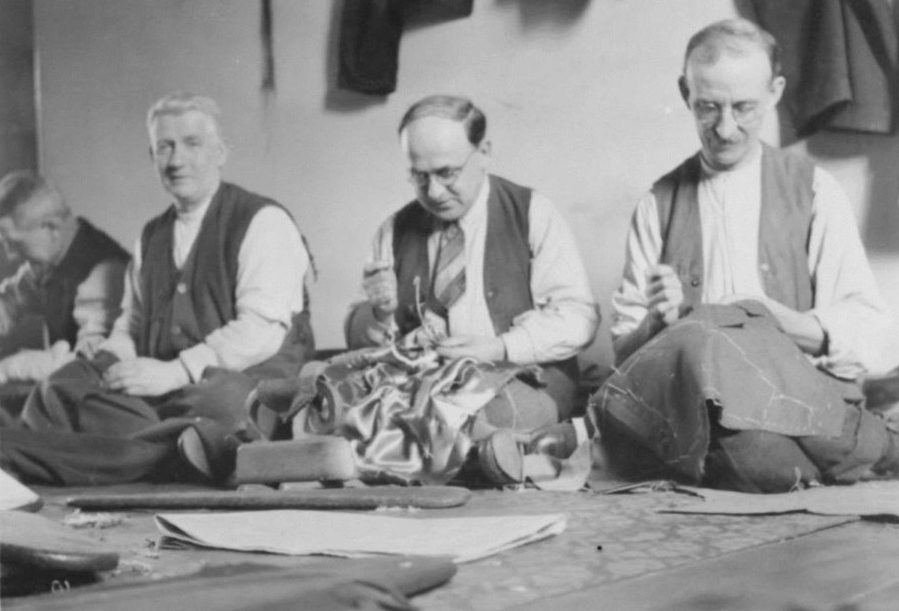
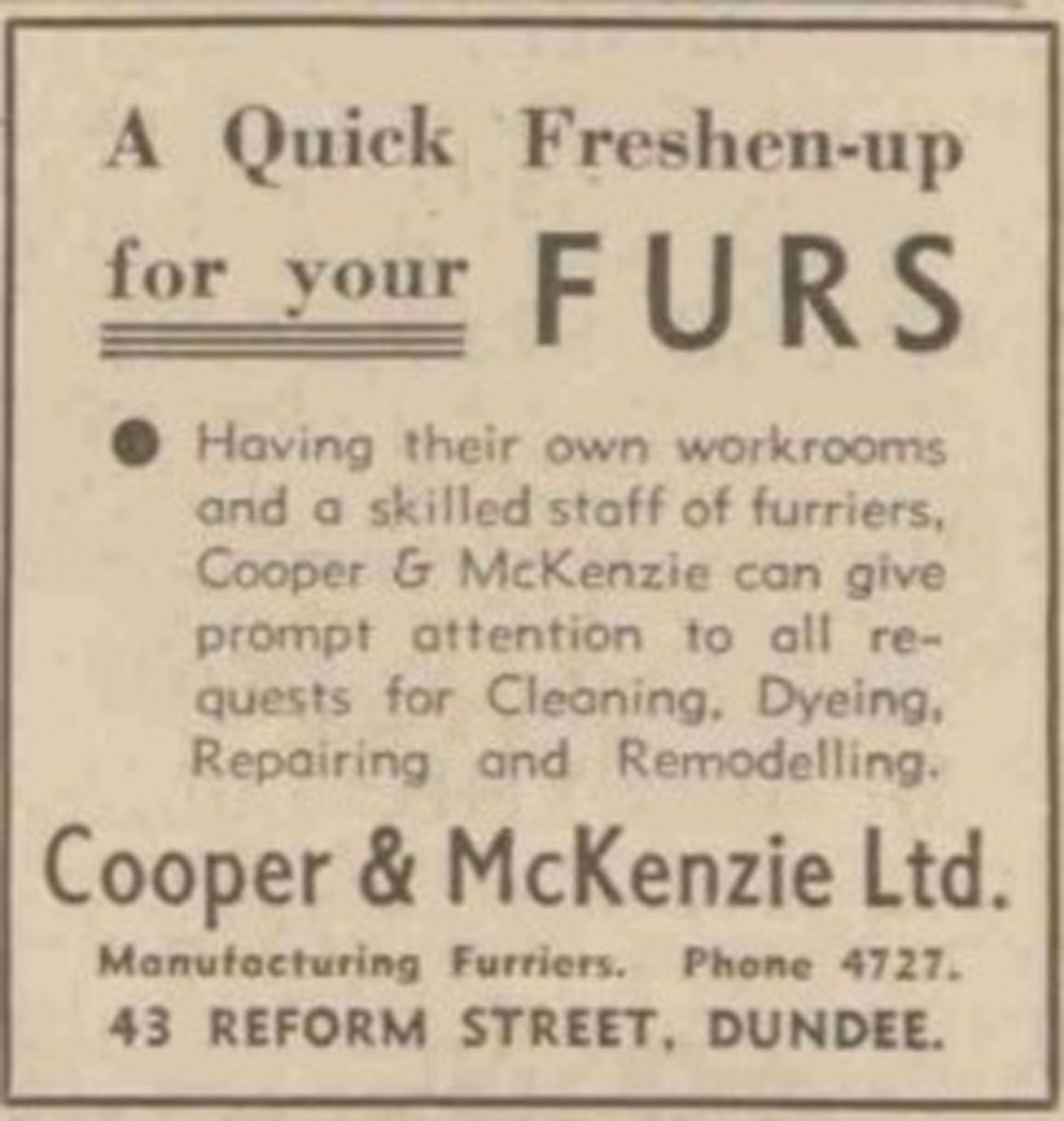
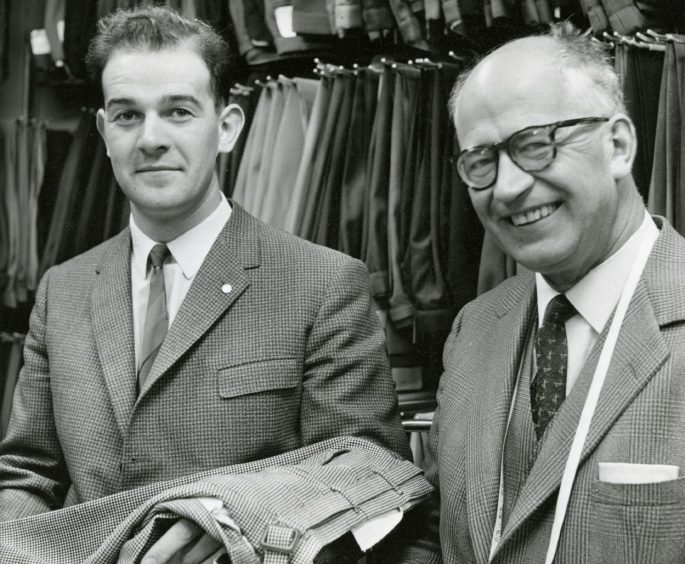

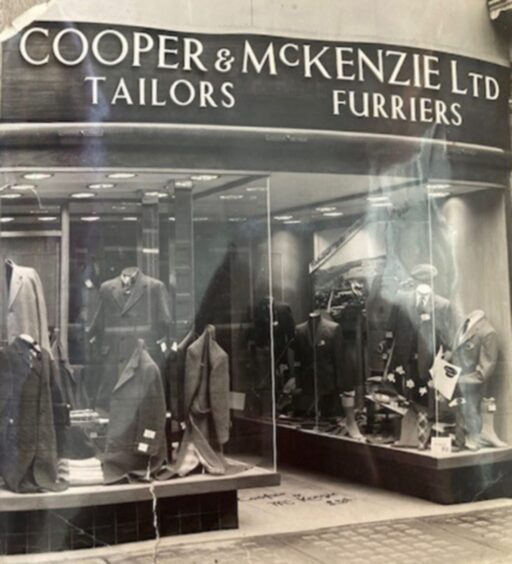
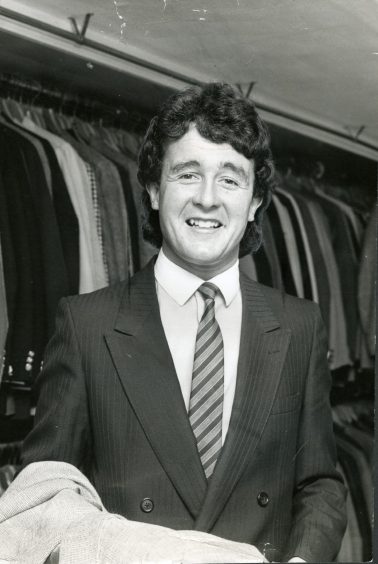
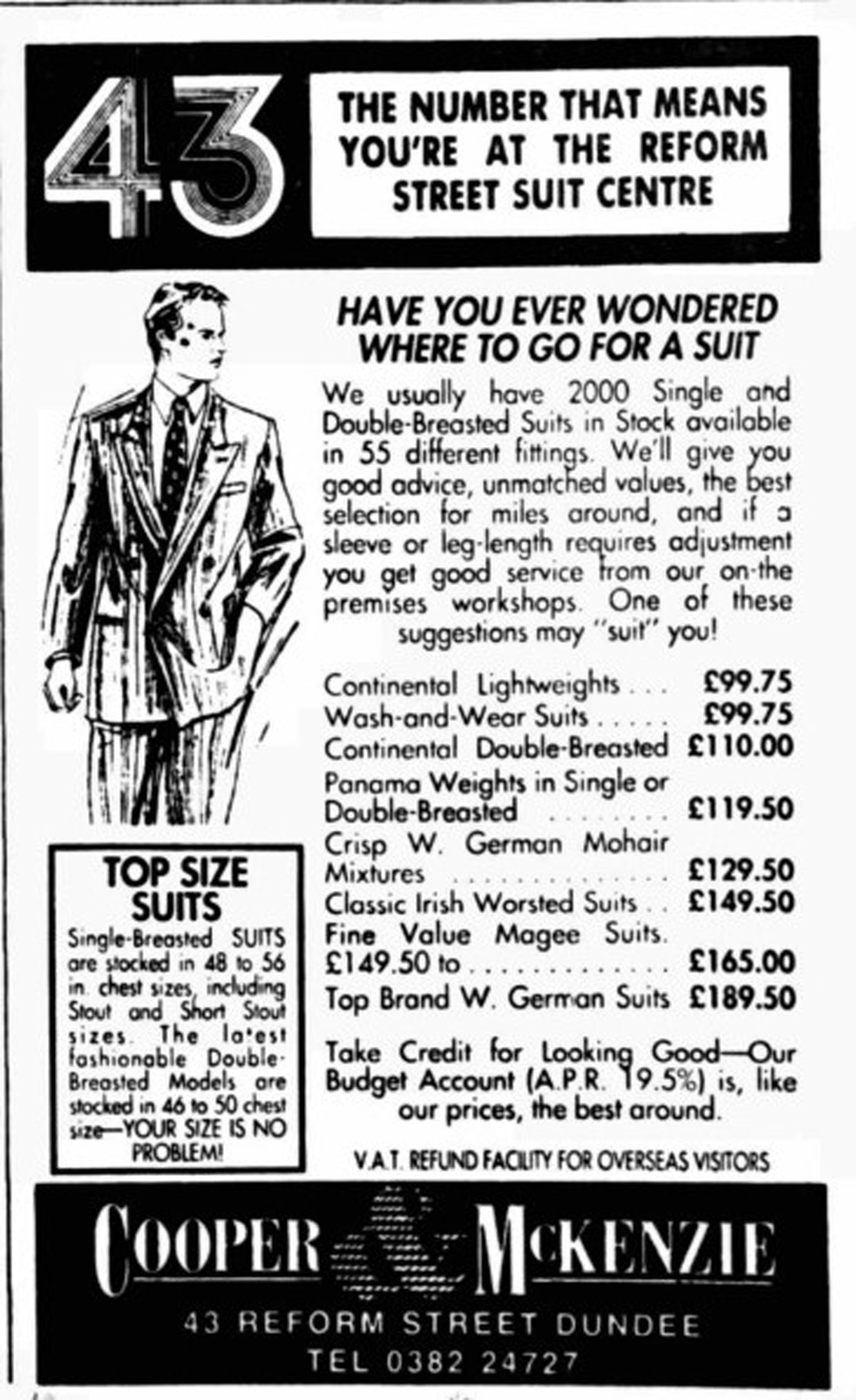
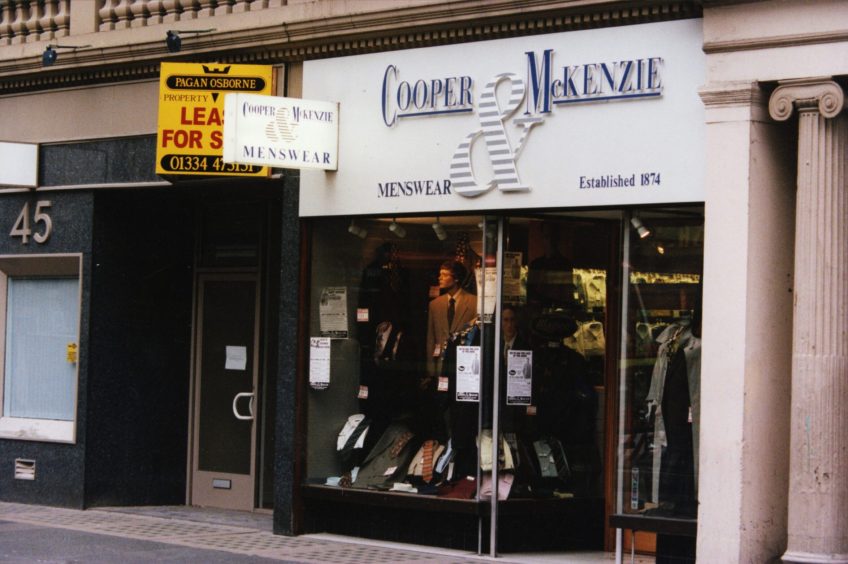
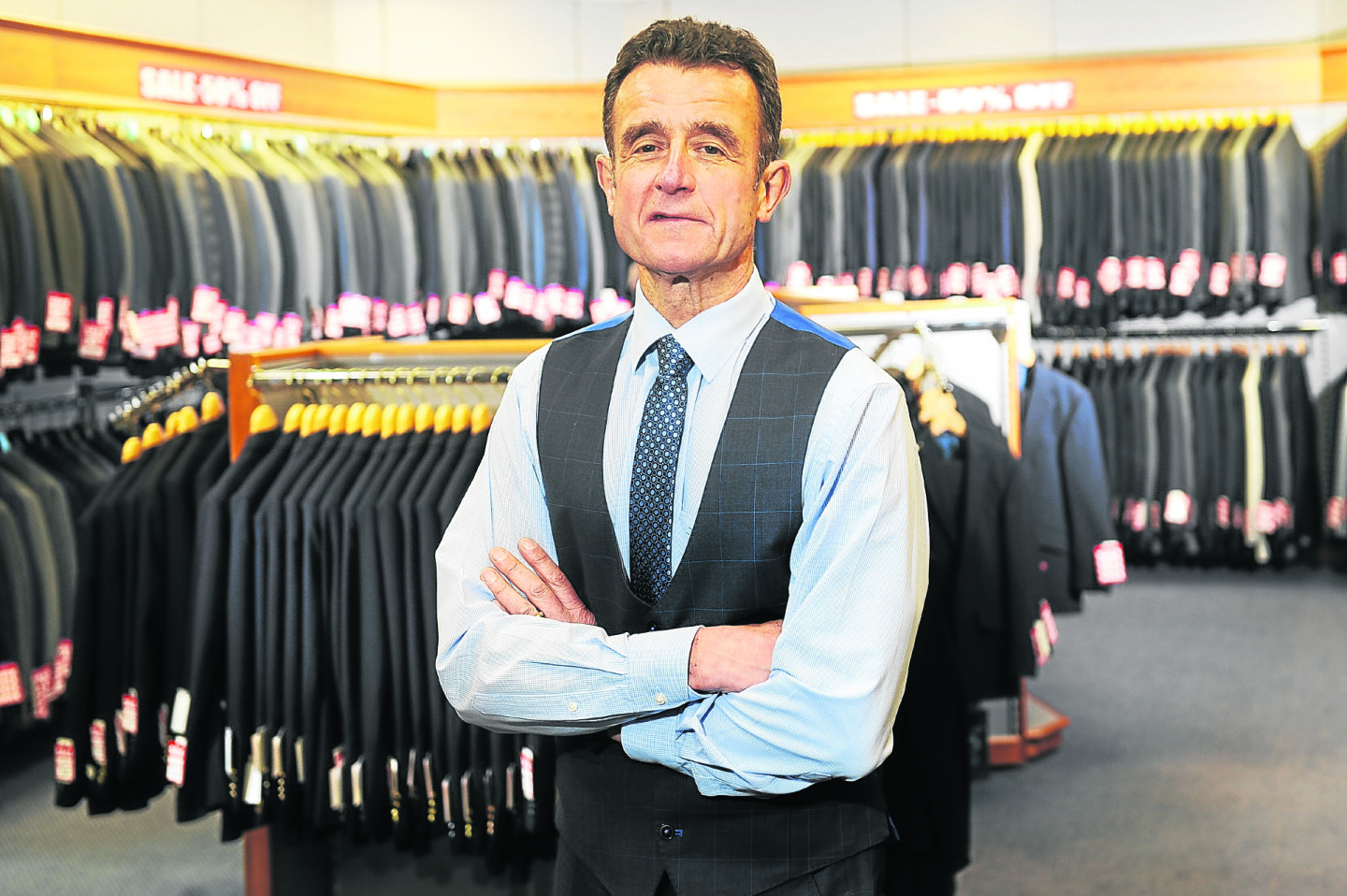










Conversation